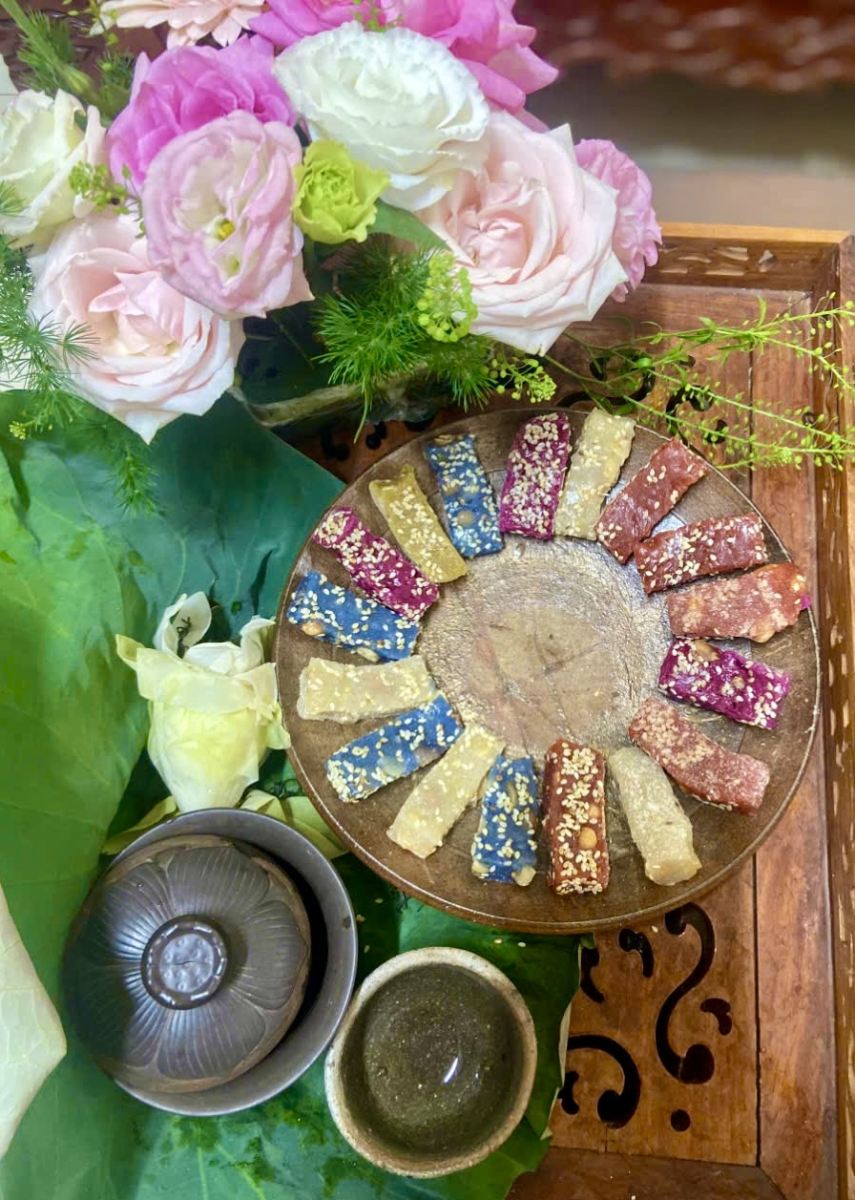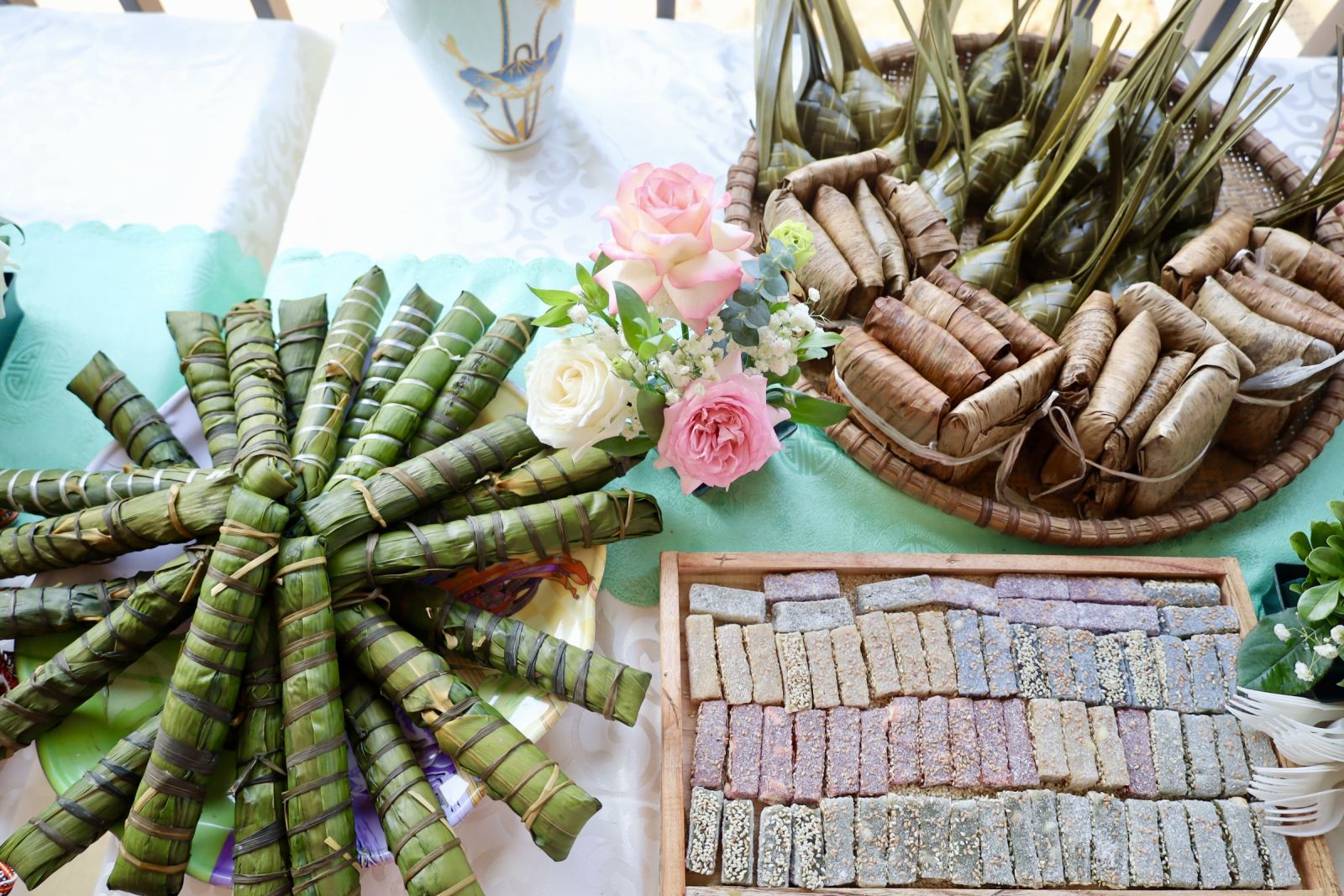Five-color cake is a famous specialty of the Cao Lan people, Ngoc Tan village, Ngoc Quan commune, Doan Hung district. This rustic dish is made from sticky rice, forest leaves with beautiful colors, and a fragrant, sticky taste that is not available everywhere.

 Five-color cake of Ngoc Tan village, Doan Hung district - a specialty of the Cao Lan people.
Five-color cake of Ngoc Tan village, Doan Hung district - a specialty of the Cao Lan people.
According to villagers, since ancient times, people in Ngoc Tan village have respected tradition and etiquette. On major holidays of the village, such as the communal house festival, full moon festival of January, February festival, Tet 3/3; 5/5 (lunar calendar), and new rice festival, villagers make sticky rice, five-color cake, and traditional dishes to offer to their ancestors. This tradition is maintained to this day.
Ngoc Tan village’s five-color cake has its own unique features with 5 colors: white, blue, black, red, and yellow, symbolizing the five elements: metal, wood, water, fire, and earth. In which green comes from pandan leaves, purple comes from butterfly pea flowers, black comes from the leaves of the plant, red comes from ripe gac fruit or red leaves, and yellow comes from turmeric... These are all natural plants that have been associated with the Cao Lan ethnic group for generations, with many health benefits. When placed next to each other, the colors combine harmoniously to create an attractive dish.
 The colors of the cake are made from natural plants and leaves, which are medicinal herbs that are beneficial to health.
The colors of the cake are made from natural plants and leaves, which are medicinal herbs that are beneficial to health.
Ngoc Tan village’s five-color cake is made from the main ingredients, including upland sticky rice flour, peanuts, sesame, coconut, white sugar, ginger, and malt. Unlike other types of cakes, Ngoc Tan village’s five-color cake is elaborate from the selection of ingredients to the processing stage. To make delicious cakes, the Cao Lan ethnic people must choose a type of sticky rice grown on the fields that is ivory white and has a fragrant, sticky taste. After being carefully selected, the rice is popped into white popcorn and then ground into fine powder.


 The cake-making process is meticulous and completely manual.
The cake-making process is meticulous and completely manual.
Next is boiling molasses and processing spices; you can use granulated sugar or sugarcane molasses combined with malt to cook into molasses. To get the right molasses (not too young and not too old), the maker must be experienced, adjusting the time so that the cake has a fragrant taste, is not bitter or burnt, and when pulled out is thin and shiny. Then add sticky rice flour, roasted peanuts, fresh ginger, and some other spices and stir well.
After the dough is cooked, pour it onto the table to knead, sprinkle roasted sticky rice flour on the table to coat the cake, then roll this mixture many times until the cake is soft and chewy.

 Five-color cakes from a traditional dish have been elevated to a traditional local specialty.
Five-color cakes from a traditional dish have been elevated to a traditional local specialty.
Enjoying the five-color cake of the Cao Lan ethnic group, diners will feel the sticky and fragrant taste of upland sticky rice, the mild spiciness of ginger, the richness of peanuts, and the sweetness of cane sugar. Each plate of five-color cake with a pot of hot and fragrant tea invites guests to encapsulate the sincere hospitality of the people here.
It is known that in order to spread and introduce this special cake to a large number of people and tourists from all over, Doan Hung district has had many policies on advising people to preserve traditional crafts, supporting brand building, and promoting and introducing products. Establishing Phu Doan Specialty Cooperative, introducing traditional specialties of Doan Hung grapefruit land, including the five-color cake of the Cao Lan ethnic group.
Hopefully in the near future, with the characteristic sticky and fragrant taste... the five-color cake in particular and the unique culinary culture of the Cao Lan ethnic group here in general will be spread and known more widely in the flow of modern society.
(Source: baophutho)